What does the Bangla New Year mean to me?

"What does the Bangla New Year mean to you?" I could hear the question as if coming from thousands of miles away, as a journalist interviewed me on the occasion. She is the head of the Bangla section of a renowned radio station in Europe. We were discussing the Bangla New Year of 1432. As she finished her question, I paused for a while. Usually, at the beginning of a new year, the question that most people face is "how do you feel?" But no, that was not the question asked of me. I hurriedly put together my thoughts and somewhat answered her question. But that question did not leave me altogether. I took time to contemplate further, and it seemed that the Bangla New Year holds five meanings for me: celebration, heritage, identity, universality, and humanity.
The celebratory aspect of the new year is well-known. The fairs in villages, in cities, in big fields, by the roadsides; all those clay dolls, figures of horses and elephants, brides and bridegrooms; the merry-go-rounds and various games all are part of the Bangla New Year celebrations. The Baul songs in rural fairs; the musical gatherings of Chhayanaut in Ramna; dressed up men and women, boys and girls in new colourful outfits; all the happy and excited children—they all reflect the celebratory aspect of the Bangla New Year.
In fact, on the first day of the Bangla New Year, every nook and corner of Bangladesh is brightened. Colours come up on the sarees of women, the punjabis of men, in flower arrangements, in arcades erected. Lines take their places in alpanas, on walls, masks, and paintings. The fine arts students of Dhaka University spend the whole night before the new year drawing alpanas, finishing graffities on the walls, making masks of various colours and kinds, and creating different figures with coloured papers for the processions next morning. All of these are parts of the Bangla New Year celebration. We welcome the new year by exchanging greetings, singing songs, and savouring traditional Bangalee food. The environment around us becomes thick with the chattering of men and women, of boys and girls, and of the old and the young. Joy, excitement and interest abound all around—happiness and celebrations mark the occasion.
The Bangla New Year has an aspect of tradition based on the age-old heritage, the culture, life and the living of the Bangalee society. Some rituals have emerged over time. In some rural areas, at dawn, women swim across the ponds and in one breath and pick green mangoes from the stooping branches of a mango tree. Similarly, the act of cleaning the front yard of the house and drawing alpanas also reflect the tradition of rural Bengal. The simple faith that "If you are fed well on the first day of the new year, you will eat well during the rest of the year," or the ritual of halkhata—new accounts ledger—by businesses and shopkeepers holds that tradition too.
During the halkhata event, shopkeepers welcome their regular customers and serve different kinds of sweets to them with the utmost affection and love. The shopkeepers ask for the blessings of the customers so that their businesses do well the whole year. And the red-coloured halkhata, leaning against the cash box of the shop is also part of the tradition. Nearby, one can see the tips of mango leaves in a brass pot, beside which rests a pen and an inkpot.
The Bangla New Year has a universal aspect. On the first day of Baishakh, we come together, irrespective of colour, creed, religion and beliefs. The new year belongs to all of us—we all feel an ownership of it. Yes, there is an English New Year, and various Indigenous communities have their new years, too. Yet, over and above everything, people from all groups take part in the celebrations, enjoy the events, and observe its rituals. It is observed in villages as well as in cities; the rich and the poor observe it simultaneously.
The Bangla New Year calendar is exclusive to Bengal and its people. No one else in the world can claim its ownership. Bangalees observe their new year with utmost devotion, whether they are at home or live abroad. What is the reason for such devotion and excitement? This is because Bangalees link their ethnicity to and equate their identity with the celebrations. It is a symbol of our identity.
This spirit highlights our human identity along with our Bangalee identity. We identify ourselves as a part of the global humanity. We utter the prayer, "Open our hearts," and we reiterate commitment "We are humans," which is our original and utmost identity. With our strong faith in universalism, we hold high the virtues of tolerance, mutual respect, friendship and peace. The spirit of universalism urges us to pray, "Connect us with everyone else and open all the doors which are shut." With the spirit of the universalism of the Bangla New Year, we connect with everyone else and free ourselves from all pettiness, divisive attitudes and hatred against others.
The relevance of all these spirits and virtues of the Bangla New Year is enormous in today's Bangladesh. Today, intolerance is on the rise in our society, and the historical communal harmony of our land is quite fragile. Our traditional virtues, with humanity at their centrepiece, seem to be struggling to hold ground. Resistance against such trends requires the spirit of the Bangla New Year to be at the forefront of our thoughts and attitudes.
At the dawn of the first day of 1432, when the eastern sky appears with colourful hues of the sun, when the blue sky and the calm earth is ready to welcome the new year, we should pray with all humility, "Let our mind rise above all the pettiness, all the bad thoughts, and let us clean our mind. Let the world of tomorrow be beautiful and bright, and let us create a world of peace." On the first morning of the new Bangla year, let this be our desire, our prayer, and our pursuit.
Selim Jahan is former director of the Human Development Report Office under the United Nations Development Programme (UNDP) and lead author of the Human Development Report.
Views expressed in this article are the author's own.
Follow The Daily Star Opinion on Facebook for the latest opinions, commentaries and analyses by experts and professionals. To contribute your article or letter to The Daily Star Opinion, see our guidelines for submission.
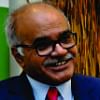
 For all latest news, follow The Daily Star's Google News channel.
For all latest news, follow The Daily Star's Google News channel. 
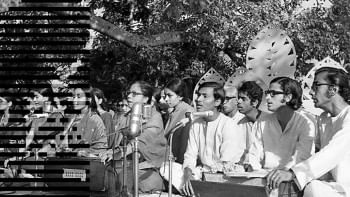



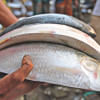

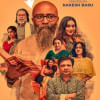
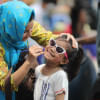


Comments